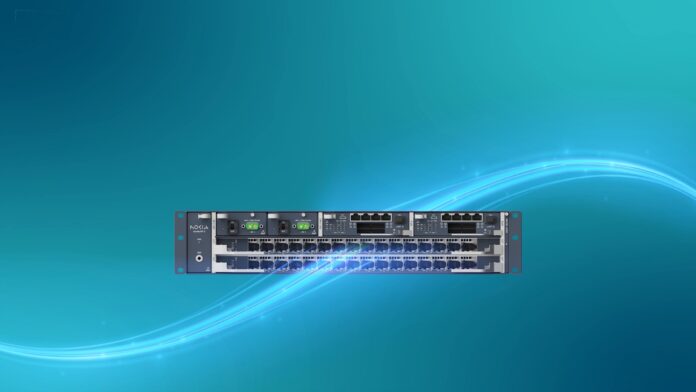With major reductions in cabling and power use, Nokia’s new Aurelis Optical LAN reflects broader industry shifts toward sustainability and open architectures
Nokia is advancing enterprise network infrastructure with the launch of its Aurelis Optical LAN, a fiber-based solution designed to deliver simplified, secure and scalable connectivity for modern workspaces. The new offering not only promises long-term reliability and cost efficiency but also reflects larger telecom and IT infrastructure trends transforming how enterprises build and operate local networks.
According to Nokia, Aurelis Optical LAN requires up to 70% less cabling and 40% less power than conventional copper-based LAN setups. Its fiber foundation — boasting a projected lifespan of more than 50 years — can cut total cost of ownership (TCO) by up to 50%, making it a compelling upgrade for cost-conscious and sustainability-driven organizations.
“With a 50+ year lifespan, fiber infrastructure ensures you’re ready for whatever comes next — without the disruption and cost of constant upgrades,” said Geert Heyninck, general manager of broadband networks at Nokia. “Optical LAN gives enterprises a future-proof foundation for connectivity, at a dramatically lower total cost.”
Reflecting larger trends in enterprise connectivity
The Aurelis launch comes amid a growing shift from copper-based to fiber-based infrastructure — not just between cities, but within buildings. As enterprise networks face mounting pressure to support real-time video, AI-driven workloads and high-speed wireless like Wi-Fi 7, legacy LAN systems are struggling to keep pace.
Aurelis supports 1 Gb/s, 10 Gb/s and 25 Gb/s speeds with a roadmap to 50 and 100 Gb/s, helping enterprises future-proof their networks for high-bandwidth applications such as AR/VR, smart building systems and advanced collaboration platforms.
In addition to speed and efficiency, Nokia’s solution emphasizes openness and integration. Built with open APIs, Aurelis is designed to work seamlessly with existing enterprise IT ecosystems. This approach aligns with a broader industry trend toward software-defined, interoperable network architectures — breaking from siloed, vendor-locked systems of the past.
“Aurelis Optical LAN delivers the simplicity, reliability and scalability enterprises need to succeed in a digital-first world,” said Heyninck.
Aurelis out in the field
Though newly branded, Nokia’s Optical LAN technology is already in use at more than 700 locations worldwide, including hotels, hospitals, university campuses and airports. These deployments highlight its flexibility across a variety of environments that require robust, low-maintenance connectivity.
One such deployment is at FairNetz GmbH in Germany. “Deploying Optical LAN across our campus was a strategic move to modernize connectivity across multiple buildings,” said Daniel Schach, head of OT-infrastructure at FairNetz. “It gives us a reliable, high-performance backbone for Wi-Fi, printers and all our office endpoints — while significantly lowering power and cabling needs.”
A fiber foundation for the future
With rising demand for more sustainable, scalable and software-driven infrastructure, Nokia is positioning Aurelis Optical LAN not just as a product but as a building block for next-generation enterprise networks. Its passive optical design simplifies operations while enabling dense, high-throughput performance, particularly important for facilities undergoing digital transformation.
The launch reinforces a growing recognition that future-ready connectivity requires more than just faster Wi-Fi; it demands a rethinking of the underlying LAN. And increasingly, that means ditching copper.

